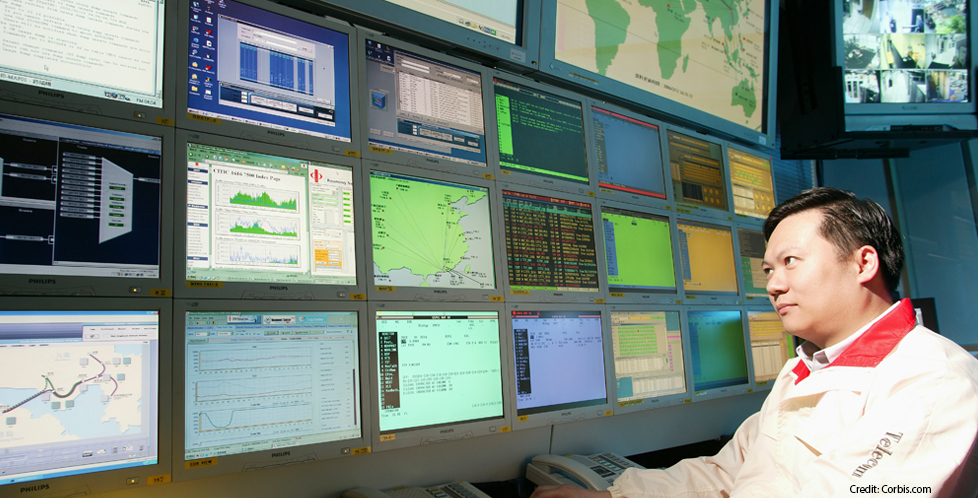Infrastructure as a Service
GE Look ahead |

Will we ever buy infrastructure the way we do a smartphone?
“Infrastructure as a service.” Those familiar with the term will instinctively associate it with the development of IT connectivity and the rise of cloud services for consumers and companies. But could the same connectivity drivers cause the expression to apply to the traditional type of infrastructure as well?
In the IT world, the term “Infrastructure as a Service”, or IaaS, is used to describe the provision of storage and cloud computing services over a network (in this case, the Internet). Along with Platform as a service (PaaS) and software as a service (SaaS), it is one of the three concepts that are building the IT networks of tomorrow. These are often organised in a hierarchical structure — with IaaS at the base and SaaS at the top. Combined, they help accommodate, manage and leverage the new possibilities offered by the Internet of Things and the Industrial Internet.
The traditional infrastructure world is already accustomed to two of them. PaaS systems like GE’s Predix, for instance, have been experimented with for more than three years in sectors ranging from power plants to oil and gas extraction, airlines and rails. In the same way, equipment manufacturers are increasingly exploring the role of SaaS, improving productivity of key industrial assets for their clients and increasing revenues from operation and maintenance contracts in the process.
By contrast, the provision of IaaS — in the IT sense of the term — remains relatively new to the industrial world. But is ramping up. “The combination of massive infrastructure spending on roads, railways, airports, pipelines, and other utilities is occurring at the same time as a new wave of privatization and public-private partnerships,” notes Dr Parag Khanna, senior fellow at Singapore’s Lee Kuan Yew School and author of the forthcoming book Connectography: Mapping the Future of Global Civilization. In the past, countries have bought electricity supply from each other, even renting floating power plants. This has now been augmented by initiatives such as China’s infrastructure bank and related multilateral funds that may build, own and operate cross-border infrastructures. “Infrastructure is now a major exportable service,” Khanna says.
But it is only now that IT solutions have spread that we can move infrastructure to its next stage of IaaS, making it the base through which connectivity of industrial data can be leveraged. One obvious example is the deployment of telecom infrastructure. Another important one is the case of smart cities.
Across the world, cities are experimenting with the deployment of sensors to improve their resource efficiency and urban services. More often than not, these are pilot projects where the physical infrastructure is provided for free by the private company. This is a win-win for public and private actors: Cities get to test the concept of smart solutions, while private companies get a chance to optimise their services — and potentially secure an incumbent position if they do a good job at it. The goal for both, of course, is a better understanding of the type of services that can be attached to a specific type of infrastructure and, more important, how to monetise these services.
Smart LED street lights are a case in point. The energy savings they provide are already sufficient for some municipalities to repay capital investment through energy savings alone, ie at no upfront cost. Adding sensors to lampposts also enables cities to better fight crime, optimise parking, monitor pollution or reduce congestion. Each of these capabilities, in turn, results in extra savings (through efficiency gains) and, in some cases, additional revenue streams — thanks, for example, to more rapid and systematic fining for parking violations.
The size of the gains will depend both on the scale at which these infrastructure solutions are deployed and how smart the software that runs on top of them is. As one engineer at GE’s 4th Minds & Machines event told Lookahead, should the overall potential gains reach large enough values, it could mark the beginning of a new business case where “you would buy a lamppost the same way you do a smartphone: not for the asset, but for the services it enables access to”.
We are, of course, still a long way from that in practice. Yet no conceptual barriers are present that would prevent such an approach to apply to more capital-intensive infrastructure assets like power plants, although, given the larger capital investments required, the added value generated from apps would have to be great.
Meanwhile, some are laying the foundations that will help integrate physical infrastructure with the IT one. Telecom companies, which are ideally positioned at the intersection between the two, have been particularly active in that regard, with projects like GoogleFiber in the US or Facebook’s project to provide Internet in developing countries via solar-powered drones. Infrastructure equipment manufacturers, including GE, are also preparing to deliver products with built-in connectivity by design (as opposed to bolting it on later).
For all its glory and potential, the most important connectivity-related service physical infrastructure provides will remain expanding global trade. Less than 25% of global trade is between countries that share a border, notes Dr Khanna: “Infrastructure is how supply chains spread and more societies join the global division of labour. Connectivity is truly the asset class of the 21st century.”